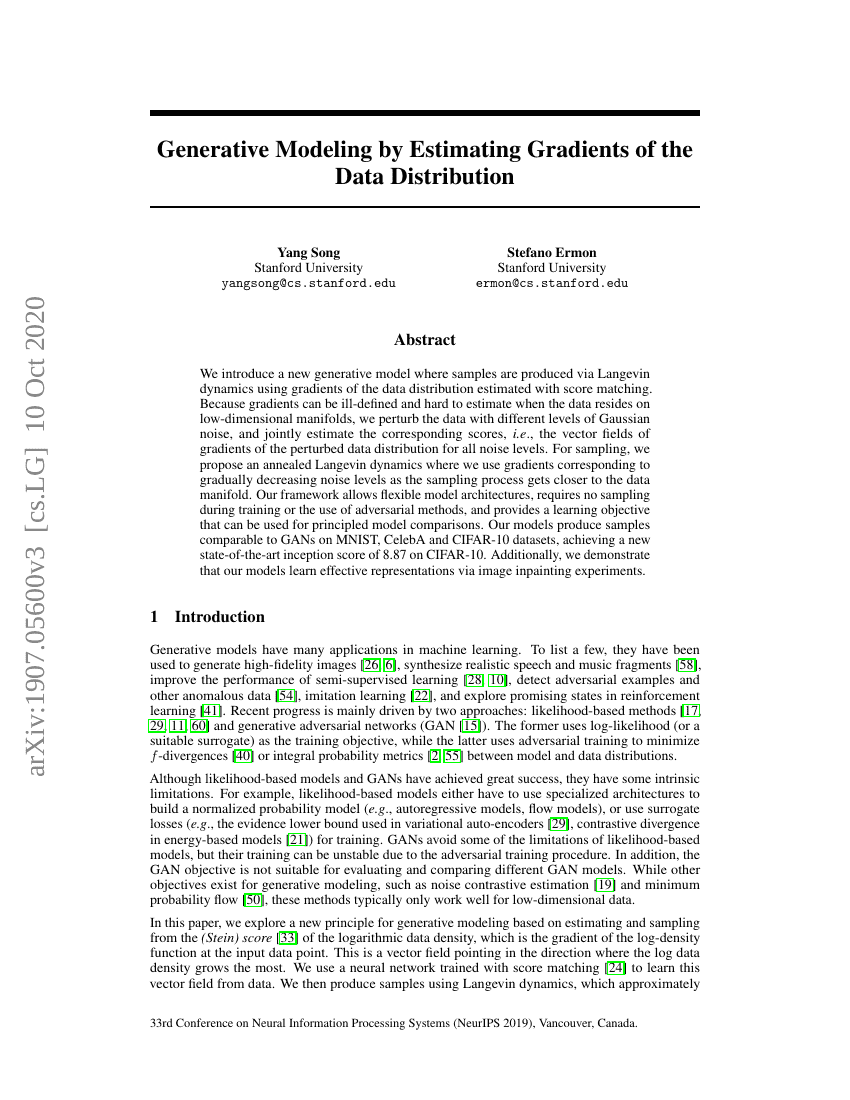
摘要
我们介绍了一种新的生成模型,该模型通过使用数据分布梯度(通过得分匹配方法估计)的Langevin动力学来生成样本。由于当数据位于低维流形上时,梯度可能定义不良且难以估计,我们使用不同水平的高斯噪声对数据进行扰动,并联合估计所有噪声水平下对应的得分,即扰动数据分布的梯度向量场。在采样过程中,我们提出了一种退火Langevin动力学方法,随着采样过程逐渐接近数据流形,使用对应于逐渐减小的噪声水平的梯度。我们的框架允许灵活的模型架构,无需在训练期间进行采样或使用对抗方法,并提供了一个可用于原则性模型比较的学习目标。我们的模型在MNIST、CelebA和CIFAR-10数据集上生成的样本与GAN相当,并在CIFAR-10数据集上达到了8.87的新最高Inception分数。此外,我们通过图像修复实验展示了我们的模型学习了有效的表示方法。
代码仓库
Lornatang/PyTorch-NCSN
pytorch
GitHub 中提及
ermongroup/ncsnv2
pytorch
GitHub 中提及
guillaumeboniface/super_resolution
tf
GitHub 中提及
PeterZhizhin/HSE-DeepLearning-NCSN
pytorch
GitHub 中提及
ermongroup/ncsn
官方
pytorch
GitHub 中提及
Xemnas0/NCSN-TF2.0
tf
GitHub 中提及
yang-song/score_sde
pytorch
GitHub 中提及
soran-ghaderi/torchebm
pytorch
voxmenthe/ncsn_1
pytorch
GitHub 中提及
henryaddison/score_sde_pytorch
jax
GitHub 中提及
yang-song/score_sde_pytorch
pytorch
GitHub 中提及
mbordyuh/score_matching
pytorch
GitHub 中提及
xiwei-cheng/chained_ld
pytorch
GitHub 中提及
基准测试
| 基准 | 方法 | 指标 |
|---|---|---|
| image-generation-on-cifar-10 | NCSN | FID: 25.32 |